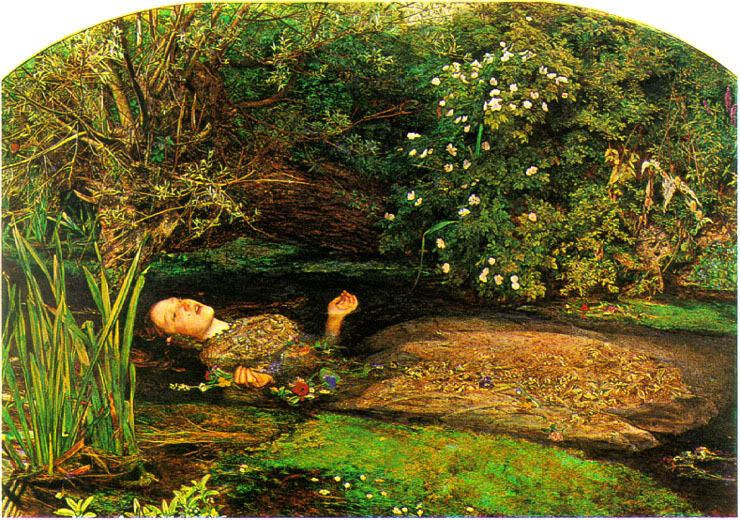 Three Cheers for Senator Grassley!
Three Cheers for Senator Grassley!12/8/2009
LinkWASHINGTON --- Senator Grassley has asked 33 medical groups for information about the financial backing they get from the pharmaceutical, medical device and insurance industries.
“These organizations have a lot of influence over public policy, and people rely on their leadership. There’s a strong case for disclosure and the accountability that results,” Grassley said.
Grassley said his inquiry follows a review of industry support for the National Alliance on Mental Illness, where he questioned the organization’s national office and state chapters. The Alliance subsequently adopted a new policy of publicly releasing industry support over $5,000. “It’d be good for the system if other organizations would follow NAMI’s lead in this area,” Grassley said.
For several years, Grassley has conducted extensive oversight and sought disclosure of financial ties with industry from research physicians, medical schools, medical journals, continuing medical education, and the patient advocacy community. He has worked to expose cases where there was vast disparity between drug-company payments received and reported by leading medical researchers. In response to Grassley’s work, the National Institutes of Health is working on new disclosure guidelines for federal grant recipients.
Grassley is also working for congressional passage of reform legislation he has sponsored with Senator Herb Kohl. Their bipartisan Physician Payments Sunshine Act would require annual public reporting by drug, device and biologic manufacturers of payments made to physicians nationwide.
“I’m interested in transparency,” Grassley said. “Letting the sun shine in and making information public is basic to building people’s confidence in medical research, education and the practice of medicine,” Grassley said.
This week, t he senator’s letters of inquiry were sent to the American Academy of Orthopaedic Surgeons, the Alzheimer’s Association, the American Academy of Allergy Asthma and Immunology, the American Academy of Dermatology, the American Academy of Family Physicians, the American College of Obstetricians and Gynecologists, the American College of Surgeons, the American Dental Association, the American Diabetes Association, the American Dietetic Association, the American Heart Association, the American Hospital Association Inc., the American Medical Association, the American Psychological Association, the American Society of Anesthesiologists, the American Society of Colon and Rectal Surgeons, the American Society of Consultant Pharmacists, the American Society of Health–System Pharmacists, the American Society of Hypertension, Inc., the American Society of Nephrology, the American Society of Plastic Surgeons, Children and Adults with Attention Deficit/Hyperactivity Disorder, Depression and Bipolar Support Alliance, the Heart Rhythm Society, Mental Health America, NARSAD, the National Association of Chain Drug Stores, the National Organization for Rare Disorders, the North American Spine Society, Screening for Mental Health Inc., the National Center for Mental Checkups at Columbia University (TeenScreen), The Leukemia and Lymphoma Society, and the American Cancer Society.
Here is the text of Grassley’s letter.
December 7, 2009
Dear _________________:
The United States Senate Committee on Finance (Committee) has jurisdiction over the Medicare and Medicaid programs and, accordingly, a responsibility to the more than 100 million Americans who receive health care coverage under these programs. As Ranking Member of the Committee, I have a duty to protect the health of Medicare and Medicaid beneficiaries and safeguard taxpayer dollars authorized by Congress for these programs.
For the last three years, the Committee has been looking into various aspects of the pharmaceutical industry, including consulting arrangements, and industry funding for Continuing Medical Education (CME). My inquiry was spurred, in part by press accounts documenting the lack of transparency in the relationships between the pharmaceutical industry and nonprofit organizations. For instance, in April 2008, The Wall Street Journal reported that industry representatives, including ten major drug companies, formed a coalition to promote looser restrictions on off-label marketing. [1] The coalition asked the National Alliance on Mental Illness (NAMI) to speak in favor of this issue.
On October 6th of this year, I sent letters to all fifty state chapters of NAMI asking them to disclose income from pharmaceutical companies. In that letter, I explained that NAMI National receives almost two-thirds of its funding from the drug industry. [2] I learned recently that a few days after I sent those letters, one of the founders of NAMI and member of the NAMI National Board of Directors emailed his resignation, stating that he was shocked at NAMI’s reliance on pharmaceutical industry funding. In particular he said: “This financial dependency presents a number of problems.”
In response to my concerns, NAMI began to disclose publicly on its website, any amount of funding exceeding $5,000 that it received from pharmaceutical companies and other foundations. This decision in favor of transparency by NAMI is encouraging.
In April of this year, the Institute of Medicine issued a report endorsing transparency and stating that protections against conflicts can be established without inhibiting productive relationships between medicine and industry to improve medical knowledge and care. I am hoping you can assist me in this effort by providing additional insights into these relationships as well as any changes in transparency that your organization may be planning for in the future. Operating with transparency sends a message that there is nothing to hide.
Accordingly, I would appreciate an accounting of industry funding that pharmaceutical, medical device companies, foundations established by these companies or the insurance industry have provided to the (Organization) (The term “industry funding” means any transfer of value, including but not limited to grants, donations, and sponsorship for meetings or programs, etc.) This request covers the period of January 2006 to the present.
Because reporting practices vary widely from one charitable organization to another, I would appreciate you also placing this income into a chart, detailing annual amounts of industry funding. For each year, please provide the following information for (Organization) :
1) Year;
2) Name of company;
3) Amount of funding; and
4) Reason(s) that the funding was provided.
In addition, please explain (Organization) policies for accepting industry funding and the disclosure requirements of your top executives and board members by answering the following questions. For each question, please respond by first repeating the enumerated question followed by the appropriate answer. Again, this request covers the period of January 2006 to the present:
1)
Please describe the policies for accepting industry funding and whether or not (Organization) allows companies to place restrictions or provide guidance on how funding will be spent.
2)
If (Organization) allows companies to place restrictions on industry funding, then please explain all restrictions and/or guidance for each transfer of value from industry. For every transfer of value with a restriction, please provide the following information: year of transfer, name of company, and restriction placed on funding.
3)
Please explain what policies, if any that(Organization) plans to adopt to ensure transparency of funding in order to provide a greater public trust in the independence of your organization.
4)
Please explain your policies on disclosure of outside income by your top executives and board members.
5)
Please provide the disclosures of outside income filed with your organizations by your top executives and board members.
In cooperating with the Committee’s review, no documents, records, data or information related to these matters shall be destroyed, modified, removed or otherwise made inaccessible to the Committee.
I look forward to hearing from you by no later than December 21, 2009.
Sincerely,
Charles E. Grassley United States Senator Ranking Member of the Committee on Finance
*****
The New York Times December 8, 2009
Grassley Seeks Details on Medical Financing by Gardiner Harris
A top Republican senator, Charles E. Grassley, has sent letters to the American Medical Association, the American Cancer Society and 31 other disease and medical advocacy organizations asking them to provide details about the amount of money that they and their directors receive from drug and device makers.
Such financing amounts are often considered proprietary by the organizations and their directors, but critics contend that the industry’s sway over such groups leads them to lobby on the industry’s behalf.
Mike Lynch, a spokesman for the A.M.A., said the organization had received the senator’s letter and would respond. Mr. Lynch said industry financing made up less than 2 percent of the organization’s budget.
Steve Weiss, a spokesman for the American Cancer Society, sent an e-mail message stating that the society “holds itself to the highest standards of transparency and public accountability, and we look forward to working with Senator Grassley to provide the information he requested.”
Kate Meyer, a spokeswoman for the Alzheimer’s Association, which also received a letter from the senator, said the organization “was going to answer all of his questions,” but she would not immediately say what share of the organization’s financing comes from drug or device makers.
The letter is part of Mr. Grassley’s long-running investigation into the influence of drug and device makers on the practice of medicine. Mr. Grassley, an Iowa Republican, has also long been interested in how charities get and spend their tax-deductible contributions.
“These organizations have a lot of influence over public policy, and people rely on their leadership,” he said. “There’s a strong case for disclosure and the accountability that results.” Earlier this year, Mr. Grassley sent a similar letter to the National Alliance on Mental Illness. The group told the senator that more than two-thirds of its donations came from the pharmaceutical industry. In response to the disclosure, Dr. H. Richard Lamb resigned from the group’s board.
Dr. Lamb joined the board of the organization in 2005, when he was “shocked to learn that approximately half of NAMI’s income comes from the large pharmaceutical companies,” he wrote in a resignation letter that Mr. Grassley made public. Alliance officials assured Dr. Lamb that the situation would change. “However,” Dr. Lamb wrote, “very little has changed, right up to the present day.” In an interview, Dr. Lamb said that NAMI’s dependence on the drug industry made some actions impossible. For instance, Dr. Lamb said that NAMI should consider warning against the use of some mental health drugs with life-threatening side effects. But Dr. Lamb said the organization could not consider such a move because it could threaten much of its financing.
Michael J. Fitzpatrick, the organization’s executive director, promised that the industry’s share of the group’s fund-raising would drop significantly next year.
Mr. Grassley’s request that organizations provide details about the outside income of directors may cause some consternation. While a few large patient advocacy groups have provided general guidance about their reliance on industry, almost none have given such details about their leaders.
Senator Grassley is looking at Pharma funding of universities too. LinkFor Immediate Release
June 24, 2009
"Grassley seeks information about medical school policies for disclosure of financial ties
WASHINGTON --- Senator Chuck Grassley has asked 23 medical schools for information about their policies for conflicts of interest and requirements for disclosure of financial relationships between faculty members and the drug industry.
Grassley sent his request to the 23 educational institutions that did not respond to an earlier request made by the American Medical Student Association for the same information. In that case, the schools reportedly replied to a survey by answering either "no response" or "decline to submit policies." Of the 149 schools asked, 126 provided information to the student association.
"There's a lot of skepticism about financial relationships between doctors and drug companies," Grassley said. "Disclosure of those ties would help to build confidence that there's nothing to hide. Requiring disclosure is a common sense reform based on the public dollars and public trust at stake in medical training, medical research and the practice of medicine."
Grassley has been working to achieve uniform and universal disclosure of the money that pharmaceutical, medical device and biologic companies give to physicians. He has conducted extensive oversight of financial relationships, especially among doctors who conduct research with the $24 billion awarded annually in federal grants by the National Institutes of Health. Institutions receiving these federal dollars are required to track financial relationships, but Grassley has found enforcement of those requirements often to be either lax or in violation. Grassley also has sponsored reform legislation that would require payments from the drug industry to be publicly reported. Senator Herb Kohl is the cosponsor of the "Physician Payments Sunshine Act," S.301.
The 23 schools receiving Grassley's letter are: the Arizona College of Osteopathic Medicine, Edward Via Virginia College of Osteopathic Medicine, Medical College of Georgia School of Medicine, Northeastern Ohio University College of Medicine, Philadelphia College of Osteopathic Medicine, Rocky Vista University College of Osteopathic Medicine, Tulane University School of Medicine, University of Florida College of Medicine, University of Nevada School of Medicine, Albany Medical College, Chicago College of Osteopathic Medicine, Dartmouth Medical School, Howard University College of Medicine, Lake Erie College of Osteopathic Medicine, Louisiana State University School of Medicine - New Orleans, Meharry Medical College, Morehouse School of Medicine, New York College of Osteopathic Medicine of the New York Institute of Technology, Ponce School of Medicine, San Juan Bautista School Of Medicine, University at Buffalo School of Medicine, University of Medicine and Dentistry New Jersey - New Jersey Medical School, University of South Carolina School of Medicine. The text of the letter is below."














